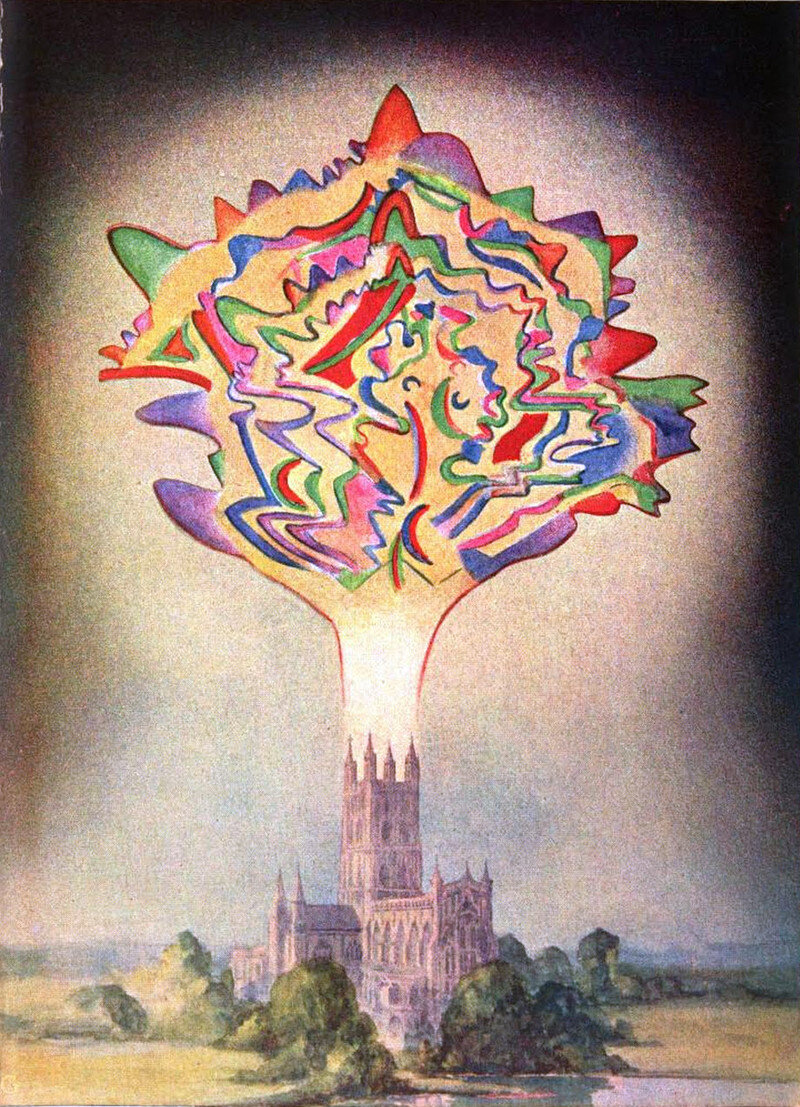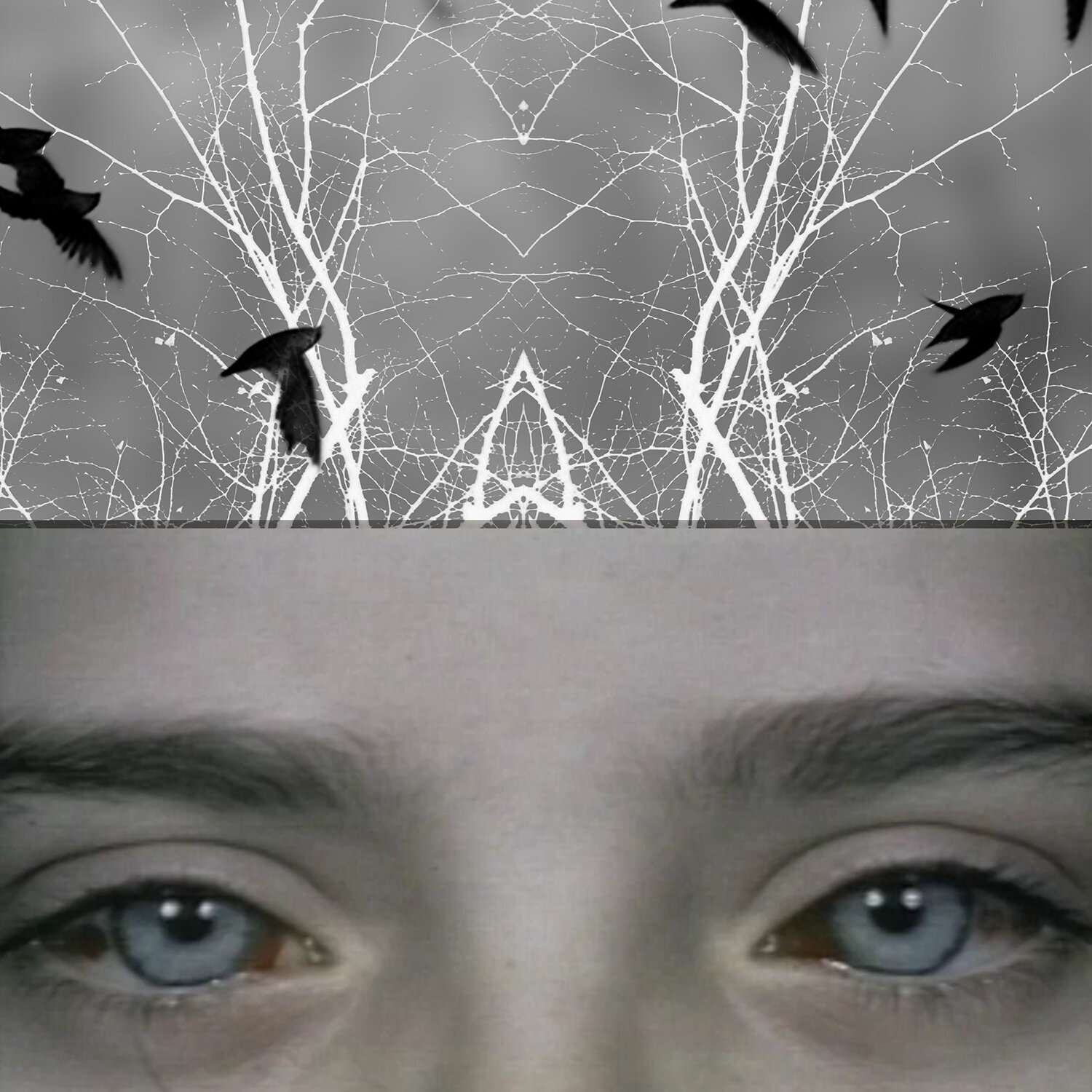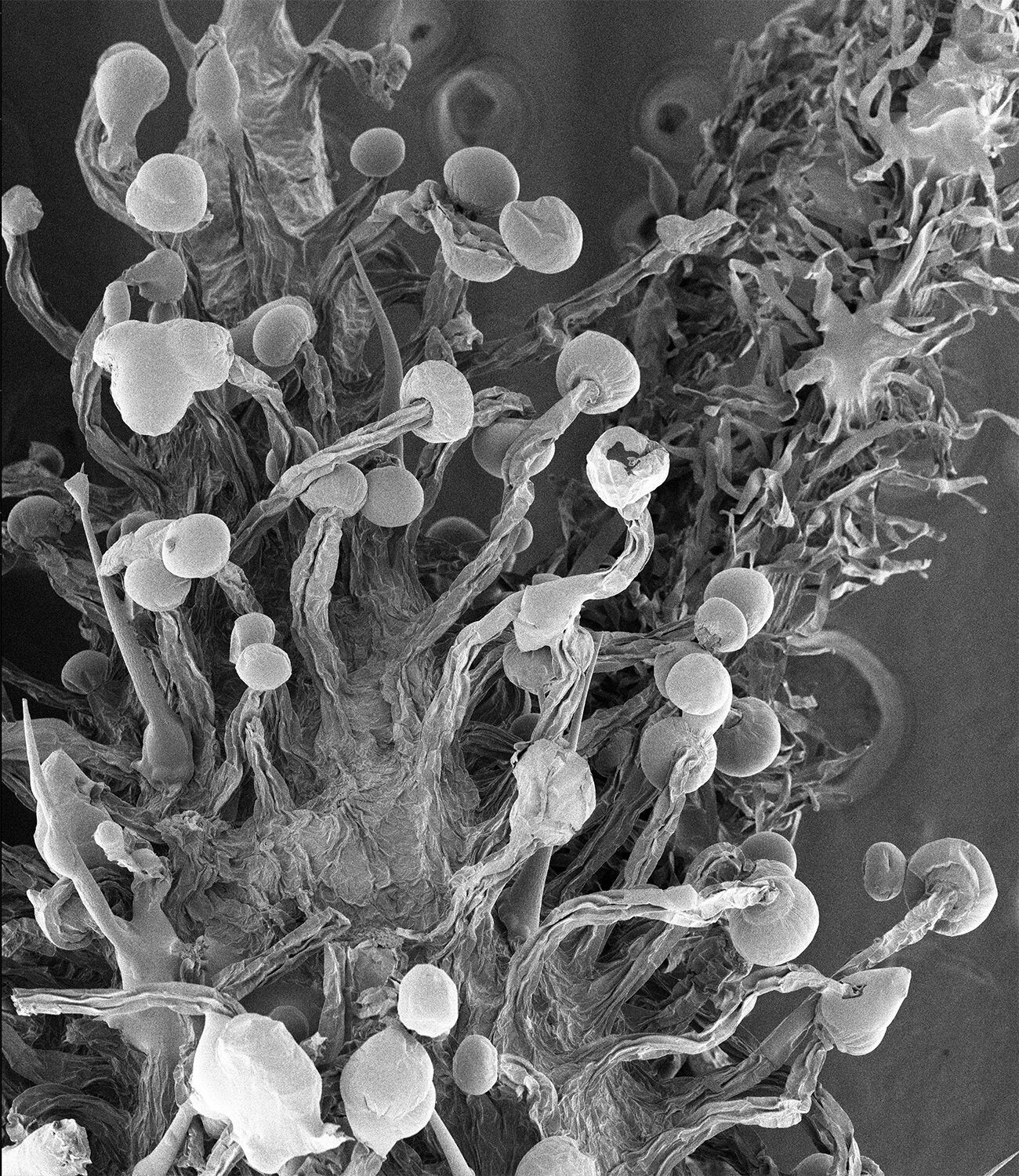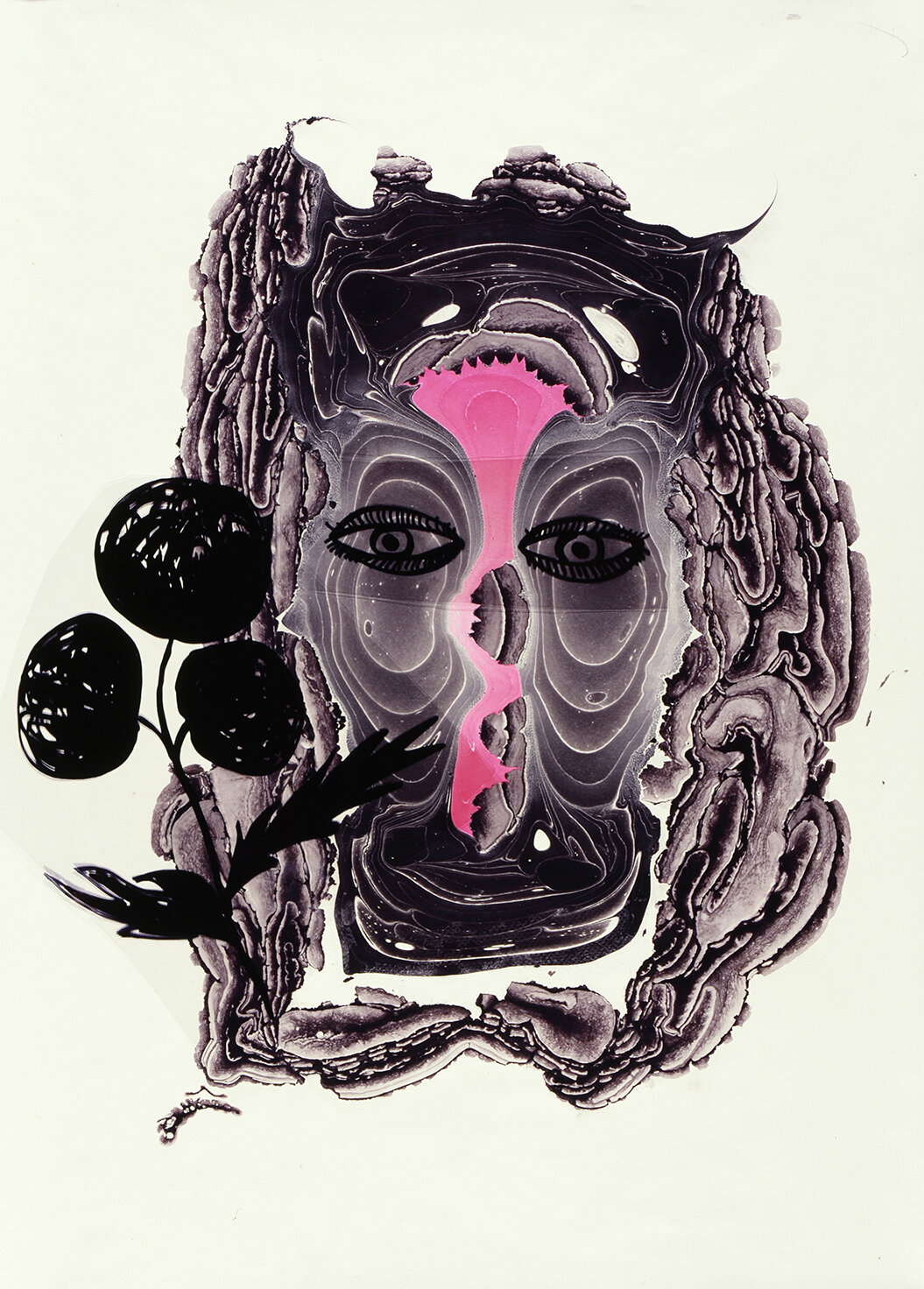Humanity’s place in the natural order is under scrutiny as never before, held in a precarious balance between visible and invisible forces: from the microscopic threat of a virus to the monumental power of climate change.
The Botanical Mind
Art, Mysticism and The Cosmic Tree
Drawing on indigenous traditions from the Amazon rainforest; alternative perspectives on Western scientific rationalism; and new thinking around plant intelligence, philosophy and cultural theory, The Botanical Mind Online investigates the significance of the plant kingdom to human life, consciousness and spirituality across cultures and through time. It positions the plant as both a universal symbol found in almost every civilisation and religion across the globe, and the most fundamental but misunderstood form of life on our planet.
This new online project has been developed in response to the COVID-19 crisis and the closure of our galleries due to the pandemic. The Botanical Mind: Art, Mysticism and The Cosmic Tree was originally conceived as a trans-generational group exhibition, bringing together surrealist, modernist and contemporary works alongside historical and ethnographic artefacts, textiles and manuscripts spanning more than 500 years. Scheduled to open on Earth Day, April 22, 2020, the exhibition opened on Thursday 24 September 2020. In the meantime we launched this online programme of new artist commissions, podcasts, films, texts, images and audio, expanding on and enriching the ideas and issues informing the show.
Including new digital commissions; a focus on the Yawanawa people of Amazonian Brazil, who were to travel to London to take part in the exhibition but are now self-isolating in their village; and a new podcast series drawing on some of the leading voices in the fields of science, anthropology, music, art and philosophy; the project will form an expanding archive exploring ideas of plant sentience, indigenous cosmologies, radical botany, Gaia theory, quantum biology, and the influence of psychoactive plant medicines on various cultures and counter-cultures across the globe.
During this period of enforced stillness, our behaviour might be seen to resonate with plants: like them we are now fixed in one place, subject to new rhythms of time, contemplation, personal growth and transformation. Millions of years ago plants chose to forego mobility in favour of a life rooted in place, embedded in a particular context or environment. The life of a plant is one of constant, sensitive response to its environment—a process of growth, problem-solving, nourishment and transformation, played out at speeds and scales very different to our own. In this moment of global crisis and change there has perhaps never been a better moment to reflect on and learn from them.
The Botanical Mind Online is curated by Gina Buenfeld and Martin Clark.
The Botanical Mind Podcast Series was curated by Matt Williams and produced with Alannah Chance.
A 224-page fully illustrated publication has been launched as a companion to the overall project, including essays by the curators and contributions from scholars from the main areas covered by the exhibition: alchemy; art history; plant ontology; Gaian ecology; anthropology; and ethnobotany. It will be available to buy online as a resource for people enjoying the online content from home as well as accompanying the exhibition. Buy here
Authors: Bernd Brabec De Mori / Gina Buenfeld / Martin Clark / Emanuele Coccia / Stephan Harding / C. G. Jung / Terence McKenna.
Designed by Sara De Bondt studio.

Acknowledgements
Botanical Mind Online is generously supported by the London Community Response Fund and City Bridge Trust.
The forthcoming exhibition is generously supported by Neville Shulman CBE and Emma Shulman.
Lenders to the exhibition: Wellcome Collection, London; The British Library; Tate; Hilma af Klint Foundation; The Josef and Anni Albers Foundation; The Linnean Society of London; Victoria and Albert Museum; Beinecke Rare Book and Manuscript Library, Yale University; BFI National Archive; Incite project; Foundation of the Works of C.G. Jung, Zurich; David Tudor Trust; Cajal Institute; Museo Thyssen-Bornemisza; Kunstmuseum Bern; Conner Family Trust; Paula Cooper Gallery, New York; The Mirtha Dermisache Archive and Henrique Faria; Estate of Jordan Belson and Matthew Marks Gallery; Estate of Channa Horwitz; Lisson Gallery; Gio Marconi, Milan; Gavin Brown's enterprise; Hollybush Gardens; White Cube; October Gallery; Aicon Gallery; Galleri Nicolai Wallner; David Zwirner; Nicelle Beauchene Gallery; Blum & Poe; Luhring Augustine; Kerlin Gallery; Aicon Gallery; Rodeo, London / Piraeus; Henrique Faria; The Museum of Everything; Prahlad Bubbar; Galerie 1900 – 2000; Collection David et Marcel Fleiss; Collection Clo and Marcel Fleiss, Paris; Joost van den Bergh; Collection of Vivienne Roberts; Udo Breger; James Brown and Zoe Cottrell; Haubrok Collection; Richard Shillitoe; The Murray Family Collection; Collection of Amy Gold and Brett Gorvy; Gonzalo Mora; Center for Visual Music; and all those who wish to remain anonymous.
The traditional artefacts of the Shipibo, Huni Kuin and Yawanawá peoples are exhibited with the consent of the artisans of their communities and we would like to express our gratitude and appreciation for sharing their cultures with us.
Special thanks to: Juliet Haysom, Mark Haysom, Haysom Purbeck Stone, The Yawanawá community, Nova Esperança Village, Rio Gregório, State of Acre, Brazil and to Delfina Muñoz de Toro, James Brett and The Museum of Everything, Joost van den Bergh, Conor Mullan of Redfern Gallery, Mauro Ribero of Rossi & Rossi, Tristan Lund, Galerie Malingue, Barry Miles, Viktor Wynd and the Museum of Curiosities - The Last Tuesday Society, Robert Conway of the Conner Family Trust, Brenda Danilowitz of The Josef and Anni Albers Foundation, Ulf Wagner of the Hilma af Klint Foundation, Andreas Neufert, Thomas Fischer of the Foundation of the Works of C.G. Jung, Paul Conran, Kathelin Gray, The Linnean Society of London, Tuplin Fine Art, José Roca at FLORA ars+natura, Carlos Rodriguez and Tropenbos International, Paula Silva, Tanya Kammonen, Carolina Luna and Gonzalo Mora, the British Council and Arts Council England.





Images
Annie Besant and C. W. Leadbeater, Seeing of Music: The Music of Gounod from Thought Forms, 1905, Public Domain.
Steve Reinke and James Richards, When We Were Monsters, 2020. Courtesy the artists.
Adam Chodzko, O, you happy roots, branch and mediatrix, 2020 Two screen video, Hildegard von Bingen’s lingua ignotae and image recognition algorithm. Courtesy the artist.
Joachim Koester, Untitled (cannabis), 2019, Silver Gelatin Print, Courtesy the artist and Galleri Nicolai Wallner, Copenhagen.
DAS INSTITUT, Dark Codex (detail), 2016 from Almanac, Eclipses and Venus Cycles series, 2 carousels with 80 medium format slides each. Courtesy the artists.
Film Credits
Footage and stills used in this film come from a variety of sources and have been used in good faith and in accordance with (a) existing copyright licenses, (b) copyright free or (c) Creative Commons licensing, or under Fair Use agreements applicable to non-commercial and/or education productions. Visual materials (video and stills) were researched and gathered from the following sources:
1. Prelinger Archives (Copyright free/Public Domain)
2. Internet Archives (Public Domain or Creative Commons licensing)
3. Wikipedia (Creative Commons licensing / Public Domain)
4. Video Hive stock footage (existing subscription of licensed content)
5. Vimeo (Creative Commons licensing / Pubic Domain)
Content sourced directly from the artists or their representatives as follows:
00:33 Gemma Anderson with Wakefield Lab, 1,2 To The Power of N, 2018 – footage of cell division (mitosis); 00:39 Hildegarde von Bingen, Liber Divinorum Operum (The book of divine works), 13th Century; 1:08 Eileen Agar, Figures in a Garden, 1979-81; 1:09 Neo-Assyrian wall panel, 865BC-860BC; 1:10 C.G. Jung, The Tree of Life, 1922; 1:11 Ernst Haeckel, Peromedusae, 1904; 1:14 Joachim Koester, Untitled (cannabis), 2019; 1:16 Anna Zemánková, Untitled, c. 1960; 1:27 Alexander Tovborg, mennesket og jeanne d’arc (balancen) hvem er dit sværd I, 2018; 1:29 Josef Albers, Study for Homage to the Square: Beaming, 1963; 1:31 Wolfgang Paalen, Pays (Paysage) Médusé, 1938; 1:32 Minnie Evans, Untitled, 1946; 1:34 Geometric Tile, North India, 15 - 17th century; 1:35 Loka-purusa, Rajasthan or Gujurat, India, c. 18th - 19th century; 1:37 Rosettes, saz leaves and carnations, North India, 17th century; 1:39 The Voynich Manuscript, c. 15th - 16th century; 1:44 Andrea Büttner, Stereoscopic slide show from the Whitehouse collection (mosses and field trips) (detail), 2014; 1:45 Philip Taaffe, Interzonal Leaves, 2018; 1:50 Penny Slinger, Solar Flare, 1976-1977; 1:53 Tamara Henderson, Womb Life, 2019; 2:02 Simon Ling, Untitled, 2011; 2:09 Anna Zemánková, Untitled, c. 1960; 2:11 Steve Reinke and James Richards, When We Were Monsters, 2020; 2:14 Steve Reinke and James Richards, When We Were Monsters, 2020; 2:17 DAS INSTITUT, Dark Codex, 2016; 2:20 Fred Tomaselli, Torso (Large), 1999; 2:28 Bruce Conner, PSYCHEDELICATESSAN OWNER, 1990; 2:36 Adam Chodzko, O, you happy roots, branch and mediatrix, 2020; 2:53 Peacock spider, Courtesy Jurgen Otto peacockspider.org; 2:57 Karl Blossfeldt, Plant Studies, from Urformen der Kunst: Photographische Pflanzenbilder, 1928; 2:58 Ernst Haeckel, Kunstformen der Natur (Artforms of Nature), 1904; 3:01 Anna Atkins, Cystoseira Ericoides, from Photographs of British Algae: Cyanotype Impressions, 1843-53; 3:03 Karl Blossfeldt, Plant Studies, from Urformen der Kunst: Photographische Pflanzenbilder, 1928; 4:39 Beadwork by artisans of the Yawanawa community, Nova Esperença Village, Rio Gregório, State of Acre, Brazil, 2020. Photo: Delfina Muňoz de Toro; 5:36 Delfina Muñoz de Toro, Nii Txana (Singers of the Forest), 2019; 5:47 Vincent Moon & Priscilla Temlsom – Justina, Sonidas del Peru, 2013; 5:53 Yves Laloy, Homme-age a Breton, c. 1960; 5:55 Wolfgang Paalen, Pays (Paysage) Médusé, 1938; 5:56 Josef Albers, Study for Homage to the Square: Beaming, 1963; 5:59 Josef Albers, Detail of Mitla, 1935; 6:05 Anni Albers, Ancient Writing, 1936; 6:50 Elena Valera Vasquez, Tela (textile), made in the traditional style of the Shipibo-Conibo people, Pucallpa, Ucayali River, Peru; 6:54 Traditional textile of the Shipibo-Conibo people, indigenous to the Amazonian lowlands of Peru; 7:32 Robert Fludd, Utriusque cosmi maioris scilicet et minoris Metaphysica, physica atque technica Historia (detail), 1617-21; 8:15 Hieronymus Bosch, The Garden of Earthly Delights (detail), c.1490-1510; 8:22 Athanasius Kircher, Mundus Subterraneus, 1664; 8:27 Hildegarde von Bingen, Liber Divinorum Operum (The book of divine works), 13th Century; 8:33 Athanasius Kircher, Ars Magna Lucis Et Umbrae, 1646; 8:35 The Voynich Manuscript, c. 15th - 16th century; 9:22 Anna Haskel, Untitled, 1940; 9:24 Anna Zemánková, Untitled, c. 1960; 9:25 Minnie Evans, Untitled, 1946; 9:29 Anna Zemánková, Untitled, c. 1960; 9:33 Adolf Wölfli, Der San Salvathor, 1926 ; 9:35 Hilma af Klint, Untitled, 1931; 9:37 Ithell Colquhoun, The Dance of the Nine Opals, 1942; 9:40 Eileen Agar, Figures in a Garden, 1979-81; 9:42 Tree of Life, Coromandel Coast, India, circa. 1760; 9:44 Jacob Meydenbach, Hortus Sanitatis, 1491; 9:54 Yggdrasill, the Mundane tree, from the Prose Edda; 9:58 Canterbury Psalter, Manuscript, 12th century; 10:05 C.G. Jung, The Tree of Life, 1922; 10:20 Wall panel, relief, Neo-Assyrian, North West Palace; 10:57 C.G. Jung, The Incantations 63; 11:10 C.G. Jung, The Incantations 54; 11:24 C.G. Jung, Mandala 105; 11:57 C.G. Jung, Mandala 107; 12:02 C.G. Jung, Mandala 89; 12:08 C.G. Jung, Systema Munditotus (The System of All Worlds), 1916; 12:53 Ernst Haeckel, Lithograph of an ophidea, a type of echinoderm similar to a starfish, 1904; 13:15 Henri Michaux, Untitled Chinese Ink Drawing, 1961; 13:18 Henri Michaux, Vibrations Mescaliennes, 1955; 13:23 Annie Besant and Charles W. Leadbeater, Music of Gounod, from Occult Chemistry, 1919; 13:25 – 13:29 Annie Besant and Charles W. Leadbeater, Occult Chemistry, 1919; 13:31 Brion Gysin, Magic Mushrooms, 1961; 13:35 Jordan Belson, Stills from Music of the Spheres, 1977; 13:47 Bruce Conner, PSYCHEDELICATESSAN OWNER, 1990; 13:58 Bruce Conner, LOOKING FOR MUSHROOMS, 1959-67/1996; 14:17 Canterbury Psalter, Manuscript, 12th century; 15:36 Adam Chodzko, O, you happy roots, branch and mediatrix, 2020; 15:46 DAS INSTITUT, Dark Codex, from Almanac, Eclipses and Venus Cycles series, 2016; 15:51 Fred Tomaselli, Colony, 2003 ; 15:57 Hilma Af Klint, Tree of Knowledge, No 1, The W Series, 1913; 16:38 Giorgio Griffa, Okokucop, 2019.
The publisher has made every effort to trace copyright holders and will make necessary accreditations for oversights at the first opportunity.

